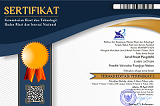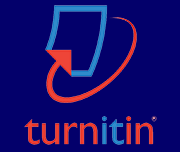Pengenalan Konsep Eko-eduwisata Mangrove di Desa Wisata Pengudang Kabupaten Bintan
Abstract
Mangrove ecosystems have functions and benefits that are quite important both physically and biologically. Mangroves can act as natural coastal protectors from damage due to abrasion and large waves and also provide shelter for associated biota. Development of a mangrove ecosystem that can be developed into a tourism area and an environmental-based education center. Pengudang Village has the potential to be developed into a mangrove ecotourism area with its resources and biodiversity. Development into a mangrove ecotourism area is constrained by public understanding of the types of mangroves, benefits and associated biota in the mangrove ecosystem of Pengudang Village. Community service activities carried out aim to provide understanding to the Pengudang Village community about the potential and types of mangrove resources and associated biota. The activity process begins with a survey of the potential of the mangrove ecosystem including recording, identification, and classification of mangrove species. The introduction and socialization of the condition of the man-grove ecosystem was carried out to the coastal community of Pengudang Village. From the results of field identification, it was found that the mangrove condition of Pengudang Village is in good condition with a dense density. Associated biota in mangrove ecosystems vary from gastropods to mammals. The identification results are disseminated to the Pengudang Village community.
Keywords
Full Text:
PDF (Bahasa Indonesia)References
Agussalim, A., & Hartoni. 2014. Potensi Kesesuaian Mangrove Sebagai Daerah Ekowisata di Pesisir. Maspari Journal, 6(2):148–156.
Arief, A. 2003. Hutan Mangrove Fungsi dan Manfaatnya. Yogyakarta: Kanisius.
Bengen, D.G..2004. Pengenalan dan Pengelolaan Ekosistem Mangrove. Pedoman Teknis. Pusat Kajian Sumberdaya Pesisir dan Lautan. IPB: Bogor.
Dahuri, M., J.Rais., S.P. Ginting., dan M.J. Sitepu. 1996. Pengelolaan Sumber Daya Wilayah Pesisir Secara Terpadu. PT. Pradnya Paramita. Jakarta, Indonesia.
Damanik, Janianton dan Weber, Helmut F. (2006). Perencanaan Ekowisata. Yogyakarta : PUSBAR UGM & Andi Yogyakarta
Fandeli, C. 1995. Dasar-Dasar Manajemen Kepariwisataan Alam. Yogyakarta: Liberty Offset.
Giri C, Ochieng E, Tieszen LL, Zhu Z, Singh A, Loveland T, Masek J, Duke N. 2011. Status and distribution of mangrove forests of the world using earth observation satellite data. Global Ecology and Biogeography. 20: 154-159.
Kaswadji, R. 2001. Keterkaitan Ekosistem Di Dalam Wilayah Pesisir. Sebagian bahan kuliah SPL.727 (Analisis Ekosistem Pesisir dan Laut). Fakultas Perikanan dan Kelautan IPB. Bogor, Indonesia.
Kusuma, C. 2011. Manajemen Hutan Mangrove. Bogor: IPB Press.
Kusumastanto, T. dkk. 2012. Pengelolaan Wilayah Pesisir dan Laut. Modul Materi Pokok Universitas Terbuka Cetakan Ketiga: Tangerang Selatan.
Keputusan Menteri Negara Lingkungan Hidup Nomor 201 Tahun 2004 Tentang Kriteria Baku dan Pedoman Penentuan Kerusakan Mangrove.
Nugroho, I. 2015. Ekowisata dan Pembangunan Berkelanjutan. Yogyakarta: Pustaka Belajar.
Nontji, A..2002. Laut Nusantara. Penerbit Djambatan: Jakarta.
Nybakken, J.W. 1992. Biologi Laut Suatu Pendekatan Ekologis. Alih bahasa oleh M. Eidman., Koesoebiono., D.G. Bengen., M. Hutomo., S. Sukardjo. PT. Gramedia Pustaka Utama. Jakarta, Indonesia.
Raymond, G. P. 2010. Pengelolaan Hutan Mangrove Berbasis Masyarakat Di Kecamatan Gending, Probolinggo, Malang. Jurnal Agritek Volume 18 No. 2: 185-200. Universitas Brawijaya.
Richard, Daniel R. and Friess, Daniel A.. 2015. Rates and Drivers of Mangrove Deforestation in Southeast Asia, 2000-2012. Proceedings of the National Academy of Sciences (PNAS), 113(2):344-349.
Santoso, N. 2000. Pola Pengawasan Ekosistem Mangrove. Makalah disampaikan pada Lokakarya Nasional Pengembangan Sistem Pengawasan Ekosistem Laut Tahun 2000. Jakarta, Indonesia.
Santoso, N., H.W. Arifin. 1998. Rehabilitas Hutan Mangrove Pada Jalur Hijau Di Indonesia. Lembaga Pengkajian dan Pengembangan Mangrove (LPP Mangrove). Jakarta, Indonesia.
Tuwo, Ambo. 2011. Pengelolaan Ekowisata Pesisir dan Laut - Pendekatan Ekologi, Sosial Ekonomi, Kelembagaan, dan Sarana Wilayah (Pertama). Brilian Internasional: Surabaya.
Widigdo, B. 2000. Diperlukan Pembakuan Kriteria Eko-Biologis Untuk Menentukan “Potensi Alami” Kawasan Pesisir Untuk Budidaya Udang. Dalam : Prosiding Pelatihan Untuk Pelatih Pengelolaan Wilayah Pesisir Terpadu. Pusat Kajian Sumberdaya Pesisir dan Lautan – Institut Pertanian Bogor dan Proyek Pesisir dan Coastal Resources Center – University of Rhode Island. Bogor, Indonesia.
Yoeti, Oka A, 2008. Perencanaan dan Pengembangan Pariwisata. Pradnya Paramita: Jakarta.
DOI: https://doi.org/10.21107/pangabdhi.v8i1.12463
Refbacks
- There are currently no refbacks.
Copyright (c) 2022 Harish Wirayuhanto

This work is licensed under a Creative Commons Attribution-ShareAlike 4.0 International License.
Jurnal Ilmiah Pangabdhi by Universitas Trunojoyo Madura is licensed under a Creative Commons Attribution-ShareAlike 4.0 International License.













